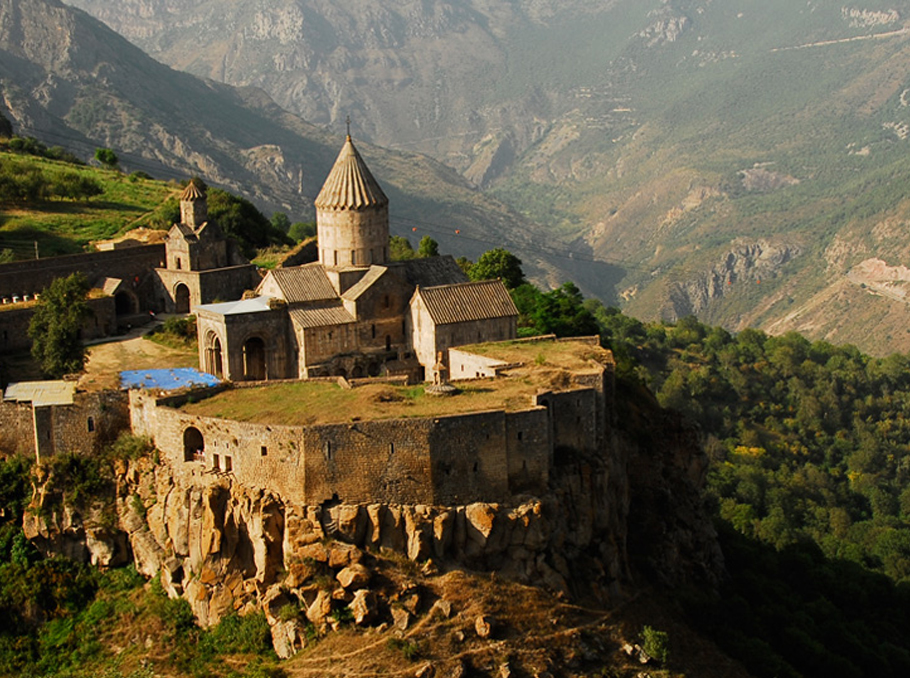Re: Armenian Nature
OLIVE TREE WAS BROUGHT INTO PALESTINE FROM ARMENIA 4000 BC AND SPREAD TO MEDITERRANEAN AND NORTH AFRICA
Filed under: Culture, Geography, History -
October 14, 2013
According to Tunisian olive museum (Zaitounah Museum) the olive
tree came to Palestine from Armenia after which it spread to the
Mediterranean and North Africa. It is explained in the following news
article from 2004.
Zaitounah Museum new addition to Tunisian heritage
The Zaitounah (olive) Museum which was opened recently in the eastern
city of Sousse is considered a new addition to the Tunisian cultural
heritage due to the pivotal role the olive tree plays in the lives
of Tunisians and the population of the Medieterranean region. [...]
Gadira said that it also aims at preserving the heritage of this
"blessed" tree for future generations, noting that this tree remained
steadfast before the various civilizations which ruled Tunisia over
some 3000 years like the Berbers, Phoenicians, Byzantines, Arabs,
Spaniards and Turks. He said that the most ancient documented sources
available report that the olive tree was brought into Palestine from
Armenia 4000 BC and then taken by the Phoenicians to Greece and later
to North Africa, particularly Tunisia. Since the ancient times,
olive oil was the choice of the elite and notables in Tunisia and
other countries of the region. It was used in religious rituals,
as a massage oil, producing perfumes and for other medical purposes.
According to the latest figures, there are an estimated 55 million
olive trees stretching from the country's north to south and covering
an area of nearly 1.6 million hectares or 30 percent of Tunisia's
farmlands. Tunisia is the world's second largest producer and
exporter of olive oil after EU states, mainly Italy and Spain. Article
originally published by Kuwait News Agency (KUNA) 12-Jul-04
Source:
Original source: http://www.kuna.net.kw/English/Story.asp?DSNO=648372
(note: the url doesn't work anymore, but I managed to access it with
the wayback machine, feel free to try it here if you are unfamiliar
with it. Bellow a screenshot of the page for the record).
OLIVE TREE WAS BROUGHT INTO PALESTINE FROM ARMENIA 4000 BC AND SPREAD TO MEDITERRANEAN AND NORTH AFRICA
Filed under: Culture, Geography, History -
October 14, 2013
According to Tunisian olive museum (Zaitounah Museum) the olive
tree came to Palestine from Armenia after which it spread to the
Mediterranean and North Africa. It is explained in the following news
article from 2004.
Zaitounah Museum new addition to Tunisian heritage
The Zaitounah (olive) Museum which was opened recently in the eastern
city of Sousse is considered a new addition to the Tunisian cultural
heritage due to the pivotal role the olive tree plays in the lives
of Tunisians and the population of the Medieterranean region. [...]
Gadira said that it also aims at preserving the heritage of this
"blessed" tree for future generations, noting that this tree remained
steadfast before the various civilizations which ruled Tunisia over
some 3000 years like the Berbers, Phoenicians, Byzantines, Arabs,
Spaniards and Turks. He said that the most ancient documented sources
available report that the olive tree was brought into Palestine from
Armenia 4000 BC and then taken by the Phoenicians to Greece and later
to North Africa, particularly Tunisia. Since the ancient times,
olive oil was the choice of the elite and notables in Tunisia and
other countries of the region. It was used in religious rituals,
as a massage oil, producing perfumes and for other medical purposes.
According to the latest figures, there are an estimated 55 million
olive trees stretching from the country's north to south and covering
an area of nearly 1.6 million hectares or 30 percent of Tunisia's
farmlands. Tunisia is the world's second largest producer and
exporter of olive oil after EU states, mainly Italy and Spain. Article
originally published by Kuwait News Agency (KUNA) 12-Jul-04
Source:
Original source: http://www.kuna.net.kw/English/Story.asp?DSNO=648372
(note: the url doesn't work anymore, but I managed to access it with
the wayback machine, feel free to try it here if you are unfamiliar
with it. Bellow a screenshot of the page for the record).















Comment